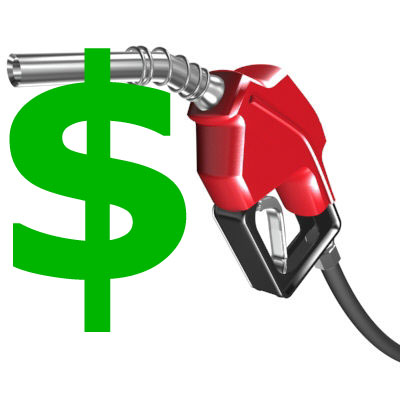With Gas Prices Increasing, Tips On How To Save Money On Gas
 With gas prices hitting an all time February high and the current national retail average price for a gallon of self-serve regular gasoline hanging at $3.65, many drivers are anxious about what to expect in the coming months.
With gas prices hitting an all time February high and the current national retail average price for a gallon of self-serve regular gasoline hanging at $3.65, many drivers are anxious about what to expect in the coming months.
"Every driver is impacted by the increased cost of fuel," said Marshall L. Doney, AAA National Vice President, Automotive, Financial Services, and e-Business. "There are several easy things drivers can do to stretch each tank of gas and find the lowest fuel prices when it is time to fill up."
The organization provides these fuel-saving tips and advice to consumers:
Properly inflate tires - Only seventeen percent of cars have all four tires properly inflated, yet the U.S. Department of Energy reports that proper tire inflation can improve fuel economy by up to three percent. It's important not only to check tire pressures at least once a month, but also make sure it's done correctly; a survey found eighty-five percent of motorists don't know how to properly check tire pressures. Check the pressures when the tires are cold and have not been driven recently. Tires should be inflated to pressure levels recommended by the vehicle manufacturer, not the pressure levels stamped on the tire sidewall. The proper pressure levels can be found on a sticker on the driver's side door jamb or in the owner's manual.
Be gentle on the gas and brake pedals - One of the easiest and most effective ways to conserve fuel is to change driving styles. Instead of making quick starts and sudden stops, go easy on the gas and brake pedals. If there is a red light ahead, ease off the gas and coast up to it rather than waiting until the last second to brake. Once the light turns green, gently accelerate rather than making a quick start. The U.S. Department of Energy reports aggressive driving can lower a car's fuel economy by up to thirty-three percent.
Drive the speed limit - Slowing down to observe the speed limit is safer and can conserve fuel. The U.S. Department of Energy reports that each 5 mph driven over 60 mph is like paying an additional $0.24 per gallon for gas. Leave yourself plenty of time to reach your destination to avoid feeling rushed so you can arrive safely and with a little more fuel in the tank.
Plan errands in advance - When running errands, try to combine multiple tasks into one trip. Several short trips starting with a cold engine each time can use twice as much gas as a longer multipurpose trip covering the same distance when the engine is warm. Also, plan the route in advance to drive the fewest miles. Online mapping tools are available to help plan routes.
Lighten the Load - A heavier vehicle uses more fuel. Lighten your vehicle by cleaning out the trunk, cargo areas and passenger compartments. Also try to avoid using a car's roof rack to transport luggage or other equipment—especially over long distances on the highway. A loaded roof rack affects the vehicle aerodynamics and creates extra drag that reduces fuel economy.
Keep up-to-date on vehicle maintenance - Keeping a car running properly helps achieve maximum fuel economy. Be sure to follow the vehicle manufacturer's recommended maintenance schedule, and do not ignore vehicle warning lights that indicate something is wrong. Warning lights can signal problems that will greatly decrease a car's fuel efficiency.
 With gas prices hitting an all time February high and the current national retail average price for a gallon of self-serve regular gasoline hanging at $3.65, many drivers are anxious about what to expect in the coming months.
With gas prices hitting an all time February high and the current national retail average price for a gallon of self-serve regular gasoline hanging at $3.65, many drivers are anxious about what to expect in the coming months.